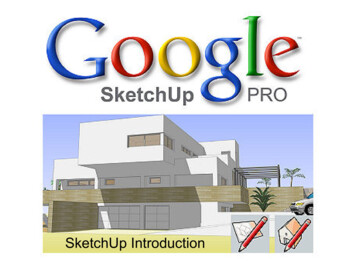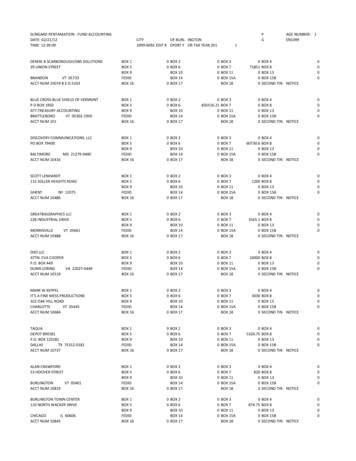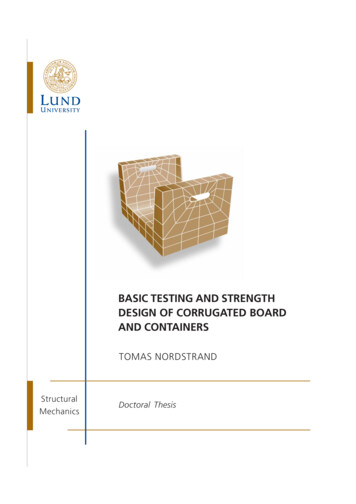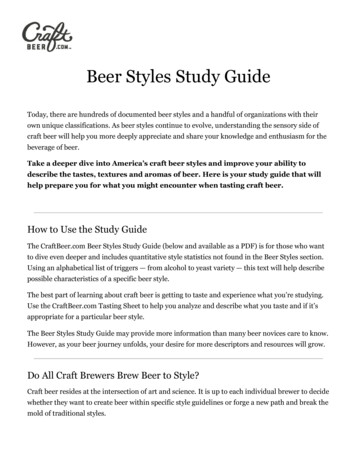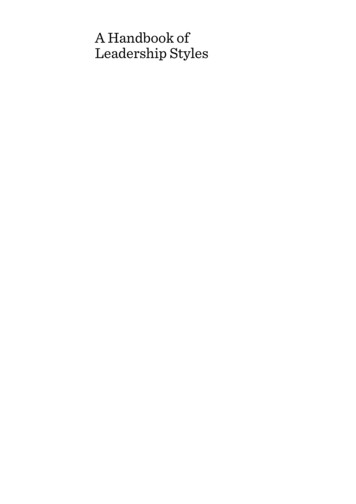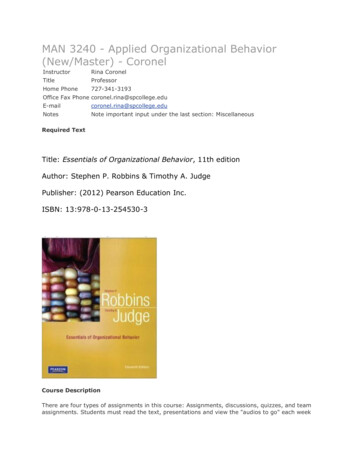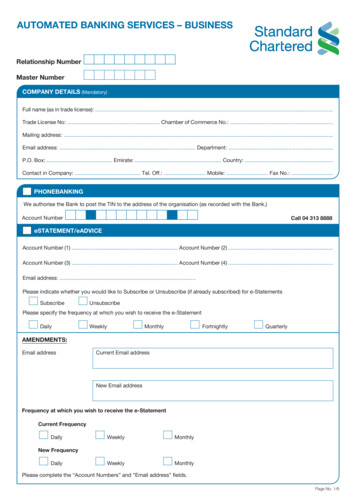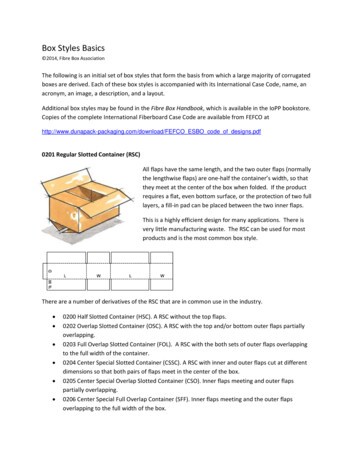
Transcription
Box Styles Basics 2014, Fibre Box AssociationThe following is an initial set of box styles that form the basis from which a large majority of corrugatedboxes are derived. Each of these box styles is accompanied with its International Case Code, name, anacronym, an image, a description, and a layout.Additional box styles may be found in the Fibre Box Handbook, which is available in the IoPP bookstore.Copies of the complete International Fiberboard Case Code are available from FEFCO athttp://www.dunapack-packaging.com/download/FEFCO ESBO code of designs.pdf0201 Regular Slotted Container (RSC)All flaps have the same length, and the two outer flaps (normallythe lengthwise flaps) are one-half the container’s width, so thatthey meet at the center of the box when folded. If the productrequires a flat, even bottom surface, or the protection of two fulllayers, a fill-in pad can be placed between the two inner flaps.This is a highly efficient design for many applications. There isvery little manufacturing waste. The RSC can be used for mostproducts and is the most common box style.There are a number of derivatives of the RSC that are in common use in the industry. 0200 Half Slotted Container (HSC). A RSC without the top flaps.0202 Overlap Slotted Container (OSC). A RSC with the top and/or bottom outer flaps partiallyoverlapping.0203 Full Overlap Slotted Container (FOL). A RSC with the both sets of outer flaps overlappingto the full width of the container.0204 Center Special Slotted Container (CSSC). A RSC with inner and outer flaps cut at differentdimensions so that both pairs of flaps meet in the center of the box.0205 Center Special Overlap Slotted Container (CSO). Inner flaps meeting and outer flapspartially overlapping.0206 Center Special Full Overlap Container (SFF). Inner flaps meeting and the outer flapsoverlapping to the full width of the box.
0301 Full Telescope Design Style Container (FTD)Telescope boxes usually consist of a separate top, or top and bottom that fit over each other or aseparate body. The International Fibreboard Case Code calls these boxes Telescope-Style. The truckand rail classifications call them Telescope Boxes if the cover extends over at least two-thirds of thedepth, and Boxes with Covers if the cover extends over less than two-thirds of the depth.The two-piece box is made from two scored and slotted blanks(trays).There are a number of derivatives of the Design Style Container including a Tray, Partial Telescope, HSCwith Design Style cover (example: copy paper boxes), and HSC with a full depth cover (example: orangeand apple boxes).0406 Wrap Around BlankA wrap-around blank is formed into a box by folding it tightlyaround a rigid product. The positioning of the product, foldingand sealing are performed by automatic equipment.The finished box is essentially an RSC, turned on its side so thatthe bottom and top are unbroken. The joint, however, is notformed until the final closure.
0410 Five Panel Folder (FPF)A single cut and scored piece features a fifth panel used as theclosing flap, completely covering a side panel. The closed box hasseveral layers of combined board on each end, providing stackingstrength and protection for long articles of small diameter whichmight be damaged, or damage the box, if pushed through theends.0427 Roll End Tray with Locking CoverFormed from a single piece of combined board on a die cutter, thedesign features an unbroken bottom, several layers of corrugatedin the end panels and a locking cover.
06 Series (Bliss Style)The three pieces of a rigid box style include two identical end panels and a body that folds to form thetwo side panels, an unbroken bottom and the top. Flaps used to form the joints can be on the endpieces or the body or both. The end panels are attached to the body with special equipment, usually atthe user’s plant. Six or more joints must be sealed to set up the box before it is filled. The name RigidBoxes comes from the fact that once the six or more joints are sealed, the box is rigid. The InternationalFibreboard Case Code identifies these styles as Rigid-Type Boxes. In the carrier classifications, rigidboxes are classified as Conventional Slotted Boxes or Recessed End Boxes.Note: As indicated above, there are several variations of the Bliss Style depending on where the “glueflaps” are placed. To achieve the “recessed end”, “glue flaps” are placed on the end panels and the endpanels are placed in a recessed position by the automatic set-up equipment. The “glue flaps” are foldedoutward for gluing.0711 Pre-glued Auto Bottom with RSC Top FlapsThe top panels of the box are usually those of a regularslotted container.For a telescope-style box, two self-erecting pieces can beused (International Fibreboard Case Code: 0714).This style would be produced on a die-cutter
09 Series (Partitions)Partitions or dividers provide a separate cell for each item in a box. They are used primarily forglassware and other fragile articles.There are an infinite number of partition designs. Only one example design is shown below.
The following is an initial set of box styles that form the basis from which a large majority of corrugated boxes are derived. Each of these box styles is accompanied with its International Case Code, name, an acronym, an image, a description, and a layout. Additional box styles may be found in the Fibre Box Handbook, which is available in the .

